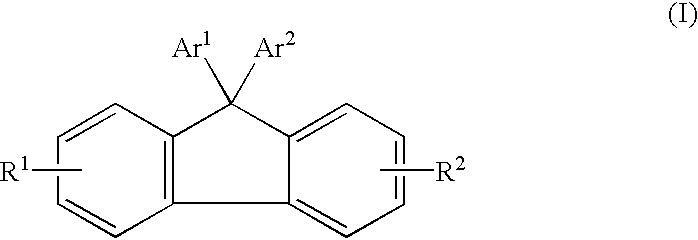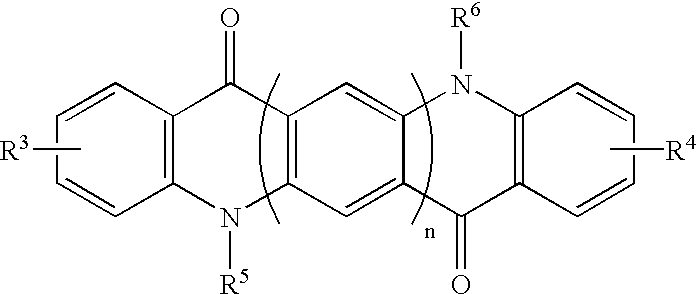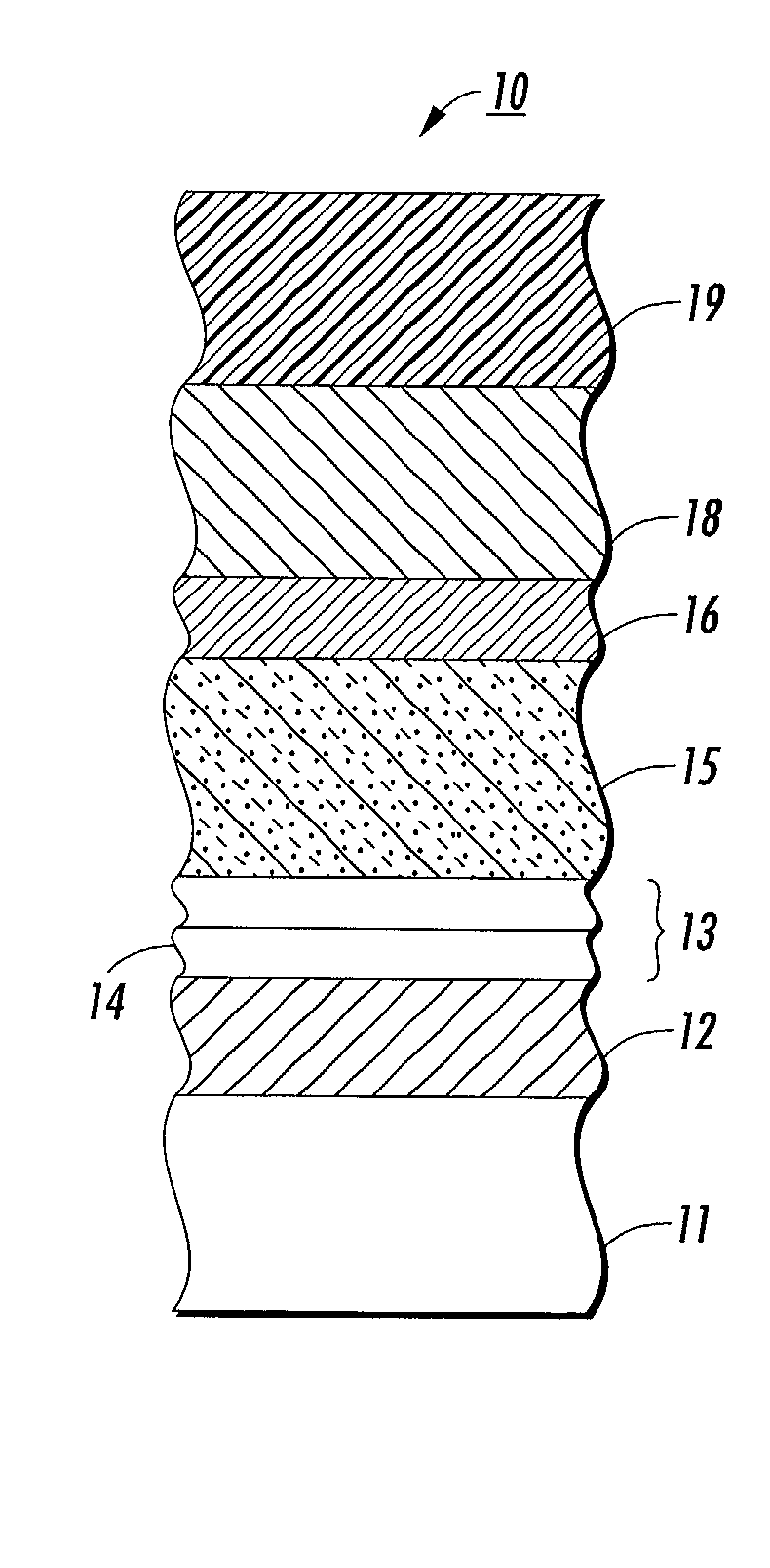Organic light emitting devices
- Summary
- Abstract
- Description
- Claims
- Application Information
AI Technical Summary
Benefits of technology
Problems solved by technology
Method used
Image
Examples
example i
[0105] Example to Demonstrate the High Operational Stability at 100.degree. C.:
[0106] An organic light emitting device having a structure, such as device 10 in FIG. 1, was formed and evaluated. In this device a naphthyl-substituted benzidine derivative, N,N'-di-1-naphthyl-N,N'-diphen-yl-1,1'-biphenyl-4,4'-diamine (NPB), and tris(8-hydroxyquinoline) aluminum (Alq.sub.3), was used as the hole transport material and the electron transport material, respectively, comprising the hole transport 13 region, the mixed region 15, and the electron transport region in the organic light emitting device 16. The mixed region 15 was comprised of about 49.5 weight percent of NPB, about 49.5 weight percent of Alq.sub.3 and further about 1 weight percent of rubrene as an emitting dopant material. Copper phthalocyanine (CuPc) was used to form the buffer layer 14 in the hole transport region 13. Silicon monoxide (SiO) was used to form the thermal protective element 19. The thickness of the buffer layer ...
example ii
[0114] Example to Demonstrate the Higher Operational Stability at 100.degree. C. of Devices According to this Invention in Comparison to a Prior Art Device:
[0115] A first group of organic light emitting devices having a structure, such as the device 10 in FIG. 1, were formed and evaluated. In these devices, a naphthyl-substituted benzidine derivative, N,N'-di-1-naphthyl-N,N'-diphenyl-1,1'-biphenyl-4,4'-diamine (NPB), and tris(8-hydroxyquinoline) aluminum (Alq.sub.3), was used as the hole transport material and the electron transport material, respectively, comprising the hole transport 13 region, the mixed region 15, and the electron transport region in the organic light emitting device 16. The mixed region 15 was comprised of about 49.5 weight percent of NPB, about 49.5 weight percent of Alq.sub.3, and further comprised of about 1 weight percent of rubrene as an emitting dopant material. Copper phthalocyanine (CuPc) was used to form the buffer layer 14 in the hole transport region ...
example iii
[0122] Example to Demonstrate the Effect of the Buffer Layer 14, 24, 34 and 44 in the Hole Transport Region 13, 23 33 and 43 in Reducing the Rate of Increase of the Operating Voltage of the Organic Light Emitting Devices During Operation:
[0123] A first group of organic light emitting devices having a structure, such as device 10 in FIG. 1, were formed and evaluated. In these devices, a naphthyl-substituted benzidine derivative, N,N'-di-1-naphthyl-N,N'-diph-enyl-1,1'-biphenyl-4,4'-diamine (NPB), and tris(8-hydroxyquinoline) aluminum (Alq.sub.3), was used as the hole transport material and the electron transport material, respectively, comprising the hole transport 13 region, the mixed region 15, and the electron transport region in the organic light emitting device 16. The mixed region 15 comprised about 50 weight percent of NPB; and about 50 weight percent of Alq.sub.3. Copper phthalocyanine (CuPc) was used to form the buffer layer 14 in the hole transport region 13. Silicon monoxid...
PUM
 Login to View More
Login to View More Abstract
Description
Claims
Application Information
 Login to View More
Login to View More - R&D
- Intellectual Property
- Life Sciences
- Materials
- Tech Scout
- Unparalleled Data Quality
- Higher Quality Content
- 60% Fewer Hallucinations
Browse by: Latest US Patents, China's latest patents, Technical Efficacy Thesaurus, Application Domain, Technology Topic, Popular Technical Reports.
© 2025 PatSnap. All rights reserved.Legal|Privacy policy|Modern Slavery Act Transparency Statement|Sitemap|About US| Contact US: help@patsnap.com



